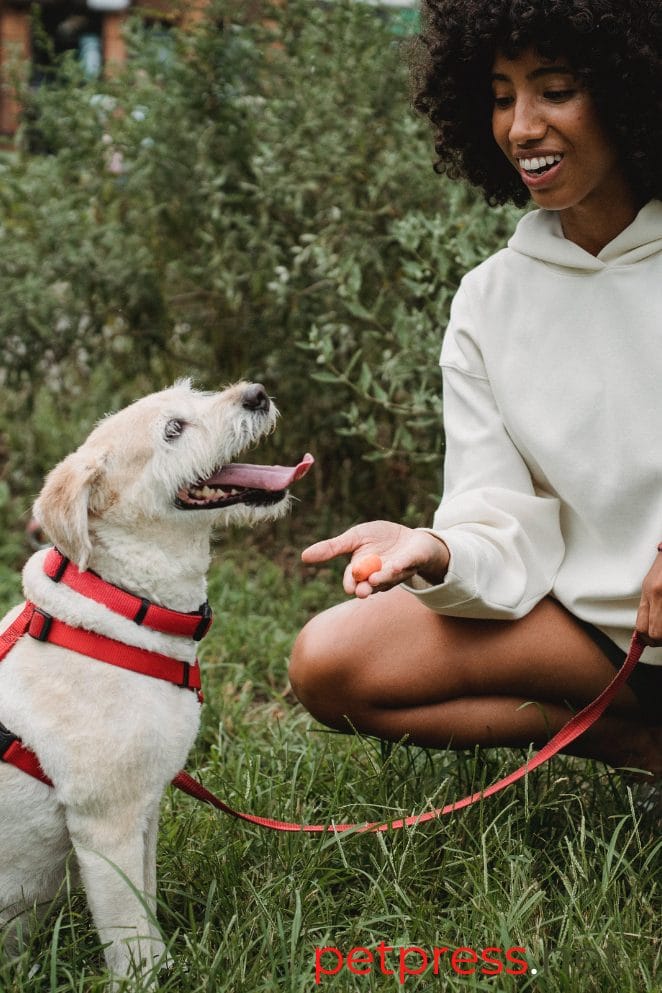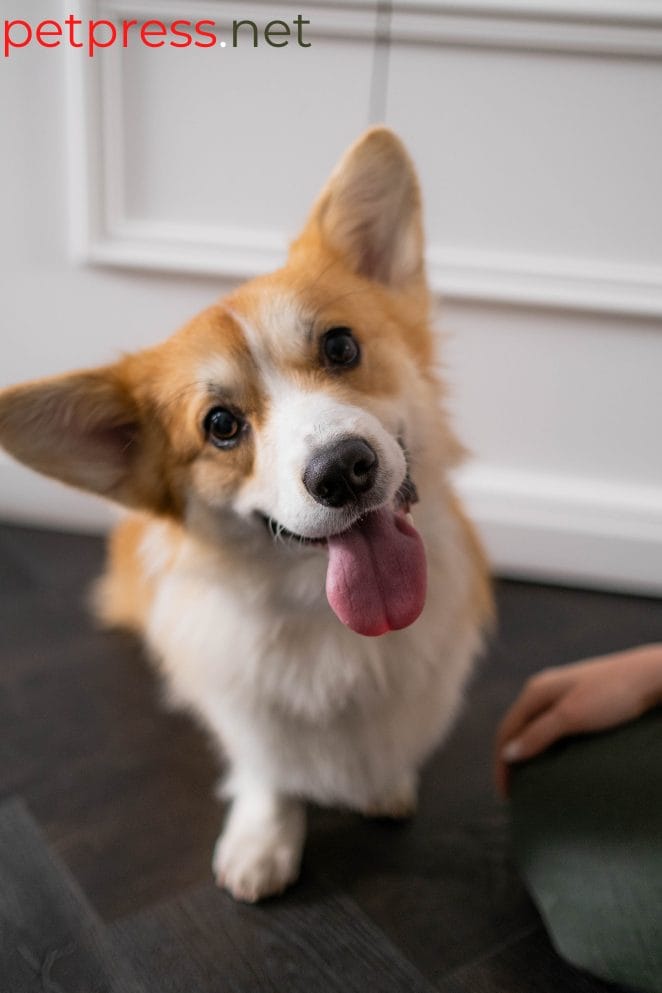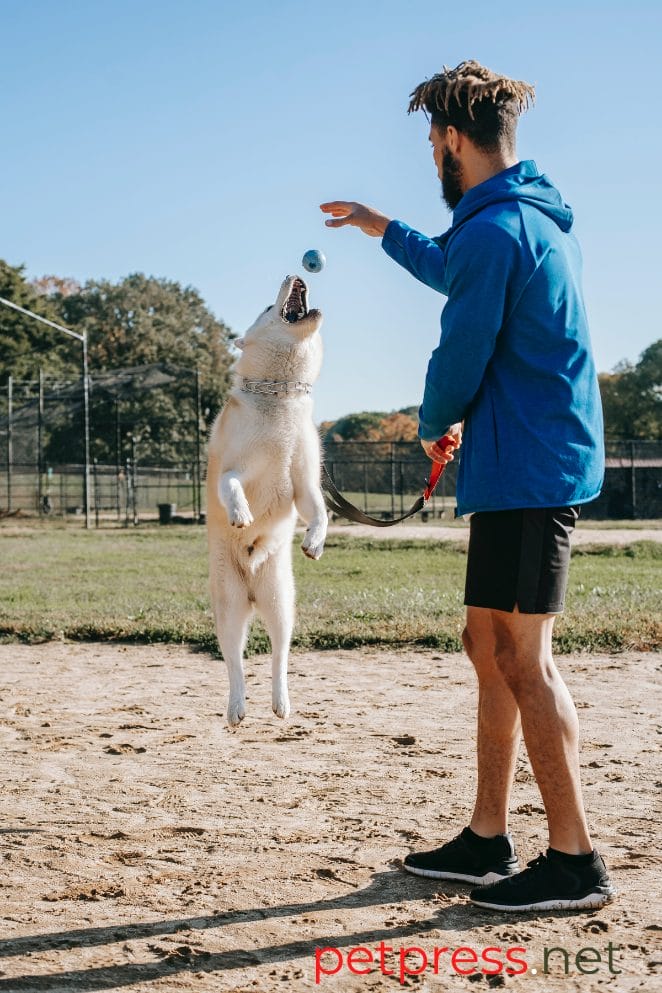
As the New Year unfolds, many are diligently pursuing their resolutions, be it hitting the gym, tightening the budget, or venturing into the world of online dating.
Amidst these endeavours, don’t overlook the opportunity presented by National Train Your Dog Month this January.
The first day of National Train Your Dog Month is January 1, 2024.
In order to increase public awareness of the value of appropriate pet training and socialization, the Association of Professional Dog Trainers (APDT) established the month-long celebration in 2010.
Since most dog adoptions occur over the holidays, January was selected as the adoption month. Dog lovers, trainers, and pet professionals celebrate everything dog related this month.
Dogs can learn the fundamentals from certain websites, including how to sit, down, stay, wait, come when called, and walk on a loose leash.
While many individuals prioritize puppy potty training and general house training, it’s equally crucial to include teaching your new pet verbal commands on your list of priorities.
Establishing boundaries and imparting essential commands not only enhances obedience but also strengthens the bond between you and your furry companion.
This proactive approach to training not only fosters a harmonious relationship but also contributes to your pet’s well-being and long-term safety.
What Is National Train Your Dog Month?

“In January 2010, the Association of Pet Dog Trainers (APDT) initiated the National Train Your Dog
Month campaign with a mission to highlight the significance of effective pet training and fostering healthy socialization for a dog’s overall well-being.
The choice of January is strategic, as it coincides with the aftermath of the holiday season when numerous dogs and puppies are adopted.
Unfortunately, a substantial number of these pets are subsequently relinquished to animal shelters or abandoned.
By dedicating January to dog training awareness, APDT aims to address this issue and promote responsible pet ownership from the outset.
“APDT is aware that a dog’s ability to remain in their home and with their family may depend entirely on their training.
Proven Dog Training Tips for New Pet Owners

Puppies, in their early months, embark on a journey of learning and discovery.
Amidst the hustle of puppy-proofing your home, arranging veterinary appointments, and gathering treats and toys, it’s crucial to carve out time for dog training.
To provide valuable insights into essential training tips for new puppy owners, we turned to seasoned professional dog trainer Jeff Tinsley.
With two decades of expertise in the field, Tinsley, based in Seattle, specializes in rescue dogs and behaviour modification, offering a wealth of knowledge for those navigating the exciting yet challenging world of puppy training.
Socialize your new puppy
Canines that feel at ease in the company of humans and other dogs are more likely to maintain composure under pressure and behave well in public.
A lot of new puppy owners schedule their training around their dog’s socialization, which is fantastic for ensuring that Fido will be able to play well with others for a very long time.
Tinsley states that socialization is most advantageous from birth to 20 weeks of age.”
You can socialize your puppy with other dogs in a disciplined and controlled setting by enrolling them in group dog training lessons.
You can arrange puppy playdates and training sessions with friends who have recently adopted puppies.
However, make sure your puppy has received all of its recommended dog vaccinations before beginning any socialization.
Practice patience and positive reinforcement
It will take time and consistent practice to train your dog, just like learning any new skill or pastime. Because of this, it’s critical to maintain your composure and optimism even in the face of frustration.
When your dog does something correctly, give them praise, and make sure you always have a supply of nutritious goodies on available to help them learn that obeying your instructions is rewarding.
Positive reinforcement can also come in the form of loving pats and head scratches, rather than overindulging your dog on treats alone.
Finding A Professional Dog Trainer
Are you looking for the ideal dog trainer to work with both you and your dog? Spend some time conducting your study.
Find out if a friend can recommend a trainer or tell you about the training session they attended with their dog. Ask your veterinarian or the local rescue group about recommended trainers.
Finding a reliable trainer might be facilitated by word-of-mouth recommendations.
To discover a trustworthy professional in your region, go to the websites of one of the many associations for dog trainers, both professional and educational, and use their “find a trainer” databases.
Be consistent with your dog’s training schedule
When a pet owner adjusts to life with a new dog, they frequently make the mistake of allowing training to lapse and get neglected. Like short-attention-spans in dogs, some people can get bored easily and stop adhering to a training regimen.
This is particularly likely to occur if the dog begins to obey directions more consistently and shows signs of learning.
In actuality, everything you’ve accomplished with your pet can be made or broken at this crucial juncture by your consistency—or lack thereof.
“Be consistent and set good boundaries right away,” advises Tinsley. “Avoid allowing negative habits to form by providing early guidance and supervision.”
Begin with the 7 ‘crucial canine commands’
Although puppies are known to have short attention spans, throughout the first few months of their lives, they are also believed to be able to pick up a range of trained abilities.
As far as fundamental commands that every dog should be aware of, Tinsley has what he refers to as “the crucial canine commands.”
These seven commands are helpful in many common situations and include sit, down, stay, wait, leave it, drop it, and come.
Even if some dog owners might decide to train their pet more advanced, it’s vital to start with the fundamentals and learn the most important commands for dogs.
Your dog will have a strong basis for learning more difficult skills after she masters these.
Why Dog Training is so Important?

You’re doing yourself and your new dog a huge favor by taking the time to train them right away.
Your dog’s amazing skills, like as sitting and lying down at your command, may save your life in an emergency, but so may their eagerness to listen to you.
The directions to “drop it” and “come” can save them from danger, for example, if they are about to consume something harmful.
In a more dire situation, being able to quickly rescue yourself and your dog from harm by calling for help in the event of a fire and having them respond immediately.
Of course, training your dog has many advantages beyond keeping your pet safe in a dog house. A key component of effective dog training is building trust between you and your friend.
This deepens your relationship and makes you happier around each other overall. It’s also important to remember that dog training keeps your pet’s mind sharp and engaged.
Benefits of Dog Training You Cannot Afford to Overlook
Here is the list of the potential benefits of dog training you cannot overlook.
Training keeps your dog safe
Dog training is essential for your dog’s safety and involves much more than just teaching him etiquette.For a brief minute, picture yourself at your neighbourhood dog park with your dog escaping as someone leaves the gate open.
The aromas of a great cafe are only 50 yards away, so your pet starts following their nose right away. However, there’s one very major problem: there’s a busy road between your dog and the cafe.
Reduce Unwanted or Unpleasant Behaviour
It will be simpler to establish limits for what is and isn’t acceptable because you and your dog will have a stronger bond and communication skills.
Frequent training sessions stimulate and care for your dog, helping to prevent behavioural issues. They also positively affect your dog’s physical and emotional health.
It’s safer for your home.
Having your dog trained makes it more likely that your living space will be respected.
By teaching your pet manners, you can ensure that it will understand what is appropriate and inappropriate behaviour in your home and will treat the other members of your family with respect.
Teaching potty training, for instance, lowers possible annoyance and protects your house.
In addition to reducing the risk that your dog may destroy the priceless antique furniture that has been in your family for five generations, dog training will save you a ton of money on house repairs.
Training Offers Mental Stimulation
Mental stimulation is one of the advantages of hiring a skilled dog trainer. Dogs need mental stimulation on a regular basis to stay healthy and happy.
It stops destructive conduct, which is frequently the result of boredom. Dogs generally enjoy having tasks to complete.
Training not only gives a dog more confidence and problem-solving skills, but it also makes them happier.
Training Makes Chores Easier
Being away from its routine might be distressing for pet parents of nervous or timid dogs, yet it happens occasionally. Every year, your dog must see a veterinarian.
It might be boarded at a kennel or left in your house with a pet sitter.
Certain pets require the attention of a licensed dog groomer.
In certain cases, it could have to be handled by strangers in awkward or delicate situations. A training program becomes essential in these circumstances.
Dogs become used to new environments and automobile rides through training sessions.
It teaches them proper behaviour when their paws are touched and their nails clipped.
Training increases one’s confidence in handling unforeseen circumstances.
Tips on Choosing the Ideal Dog Trainer

The following are the tips to consider while choosing an ideal trainer for your dog.
Online Search
Go online and look for local dog training programs. Compare the outcomes to the recommendations you’ve gathered through word-of-mouth. Examine the services that are provided.
Do the group class schedules fit your schedule, if you’re seeking for them? Does the trainer have experience in the field you’re trying to get help with? Do they have any internet recordings or recorded events that feature them in action?
Similar to word-of-mouth recommendations for local businesses, a trainer’s website positioning affects search engine rankings.
Look at Certifications and/or Education
It could be time-consuming to find the best dog trainer for your needs. You must confirm that they match well with you and fulfill their commitments.
As dog training is not a recognized profession, it is crucial that you complete your homework.
Although a certification does not imply a certain degree of skill, it does indicate that the trainer has completed some sort of training and passed some exams in order to obtain it.
Ask for Referrals
After determining the kind of assistance, you require, it’s time to hunt for it! Many individuals in your neighbourhood can assist you in creating a list of potential trainers and behaviour consultants.
Keep in mind that a trainer or consultant may not be the best fit for you and your dog simply because you received a suggestion from one of these sources.
How successfully a trainer markets their services has a big impact on referrals from neighbourhood pet stores, but a smart marketer isn’t automatically a good dog trainer.
Visit the Facility
Once you believe you’ve identified a suitable candidate, inquire about the possibility of touring the facility or attending a lesson to observe their training methods.
This step allows you to assess the cleanliness of the environment and gain a more comprehensive understanding of their approach to dog training.
Trust your Gut
If the references check out, proceed to schedule an appointment with the trainer. Assess whether both you and your dog feel at ease with the trainer.
Consider if you have confidence in your pet’s safety during the training sessions.
Evaluate the trainer’s demeanour for friendliness and professionalism.
If any doubts arise, trust your instincts and consider continuing your search for a trainer who better aligns with your needs and preferences.
Training Tips for Adopted Dogs

Patience is key
Be prepared to allow your pet some time to acclimate to its new home and family, especially as you embark on the journey of learning how to train a rescue dog.
The adjustment period for dogs can vary, ranging from a few hours to several months when transitioning to a new environment.
Patience and a calm demeanour on your part are essential during this period, as they contribute to creating a sense of safety for your dog, ultimately fostering a positive and trusting relationship.
Predictability matters
Dogs often find comfort in routines, and abrupt changes can cause stress. For instance, keep your dog’s food in a designated spot and maintain that routine, rather than searching for an ideal location for the food and water dishes.
The same principle applies to bedding—keeping it consistent helps provide a stable and reassuring environment for your new pet.
Comfort counts
Prioritize the physical comfort of your new pet to create a sense of security at home. Provide ample food and a variety of toys to make the environment enjoyable.
If you’re using a crate, ensure it is equipped with a thick foam dog bed and cozy blankets, offering a snug and inviting space for your dog to rest.
This attention to physical well-being contributes to your pet feeling safe and cared for in its new home.
Dog-proof for safety
Establishing a secure environment for your dog right from the start is crucial for fostering confidence.
Consider incorporating child-proof cabinet locks on doors containing cleaning supplies, elevate houseplants to discourage digging, and keep doors closed to limit access to rooms you prefer your inquisitive new pet not to explore.
Conclusion: National Train Your Dog Month
Surprisingly, many dogs find themselves in animal shelters due to behaviour and training issues that could be resolved with proper socialization and training.
National Train Your Dog Month, initiated by the Association of Professional Dog Trainers, aims to shed light on the crucial role of socialization and training.
This initiative advocates for fostering a strong and lifelong bond with our canine companions, emphasizing that this relationship is among the most rewarding we can experience.
Jump aboard the training train and embark on a journey to teach your dog everything they need to know about being a very good boy (or girl!). The result? A happier life for both of you.
Do you have inquiries? We’ll respond to you as quickly as we can if you leave them in the comments! Until then, Have a happy training!
—————————–


GIPHY App Key not set. Please check settings